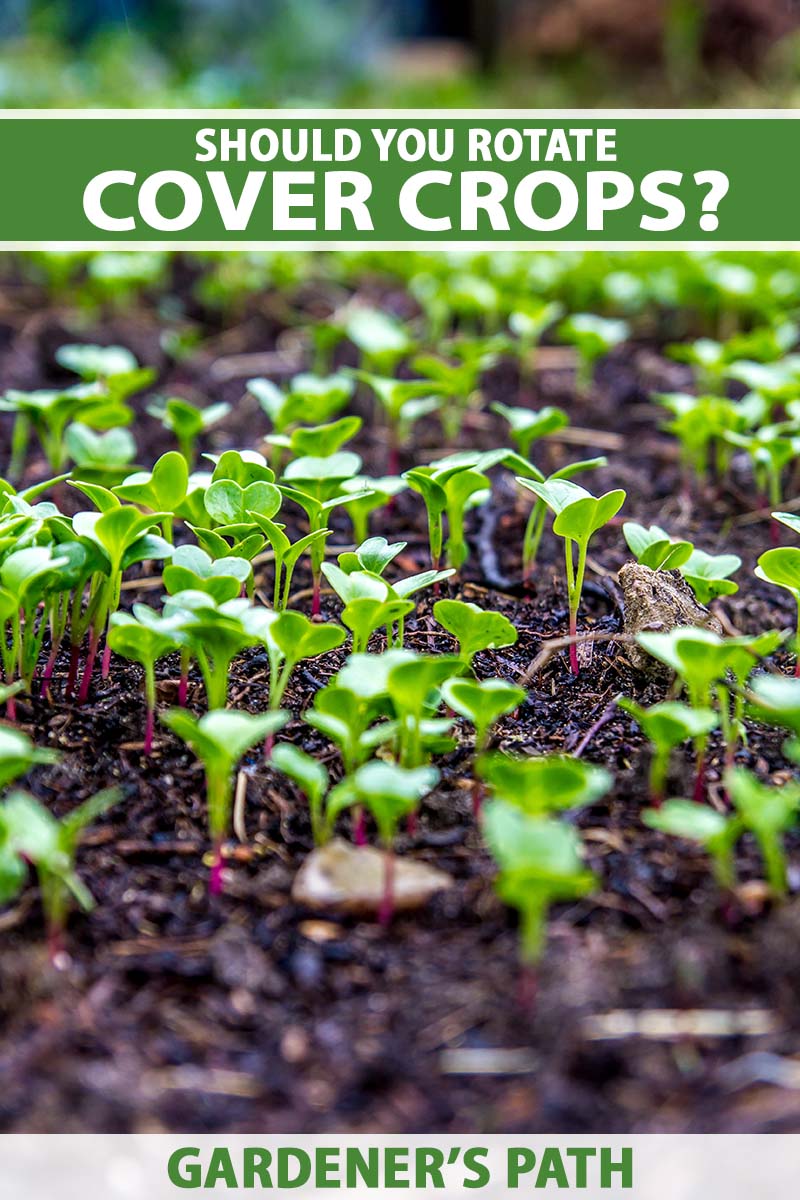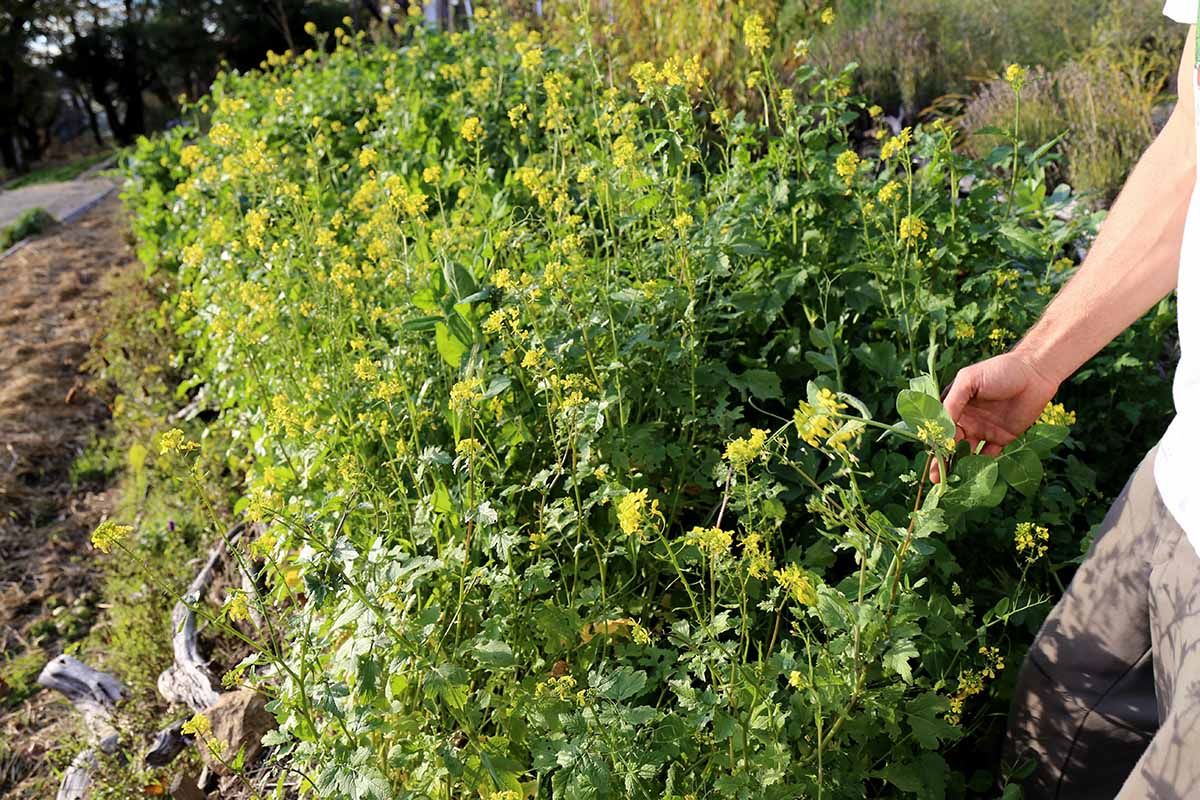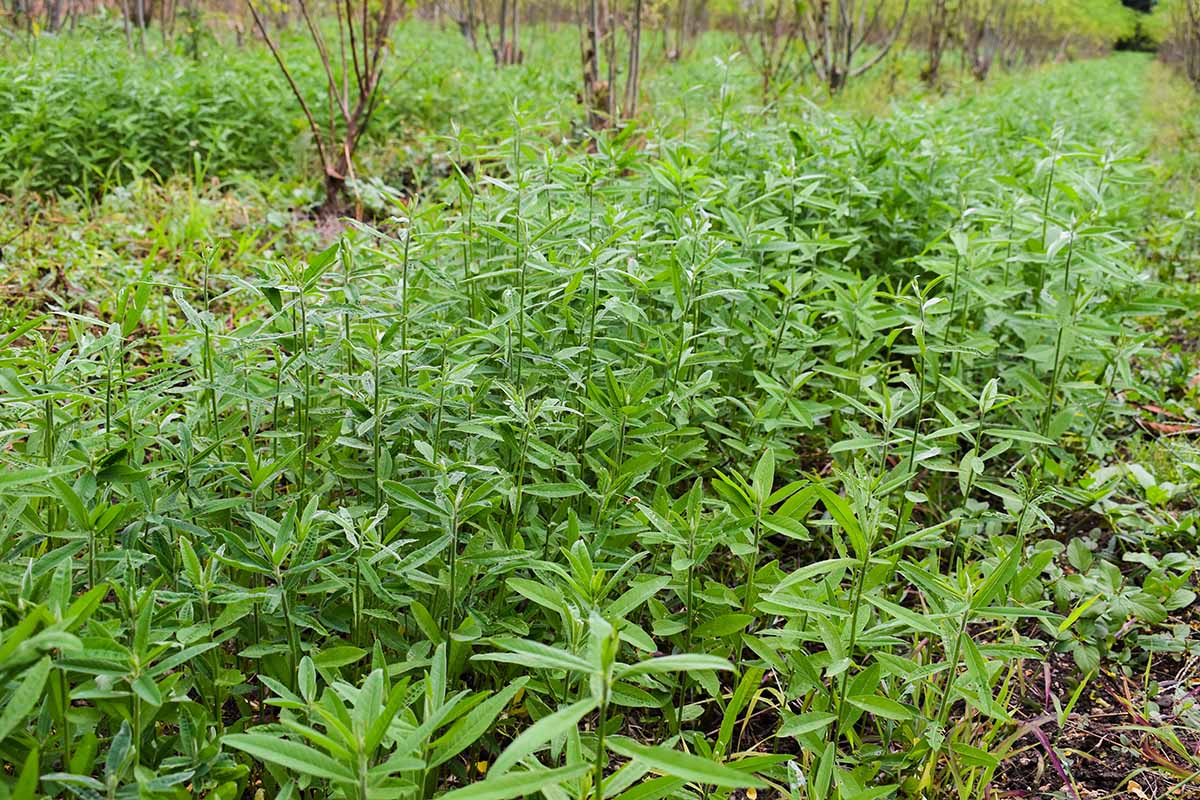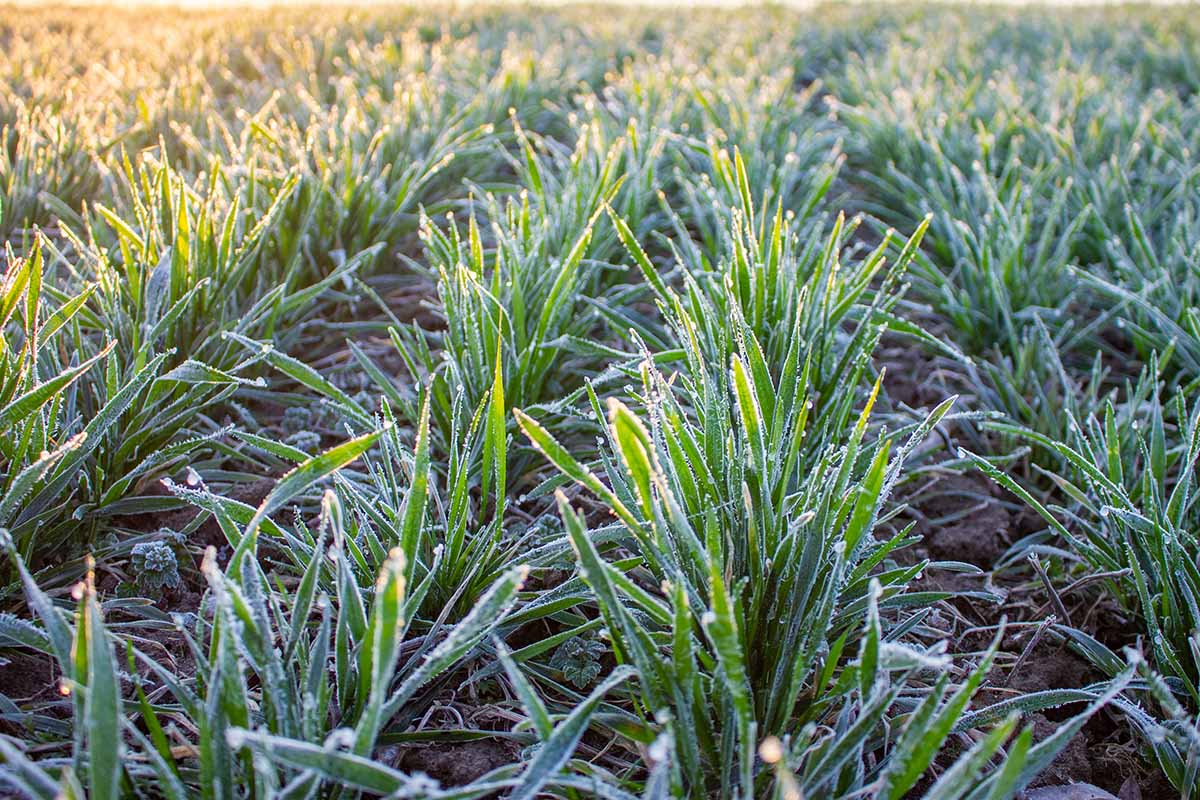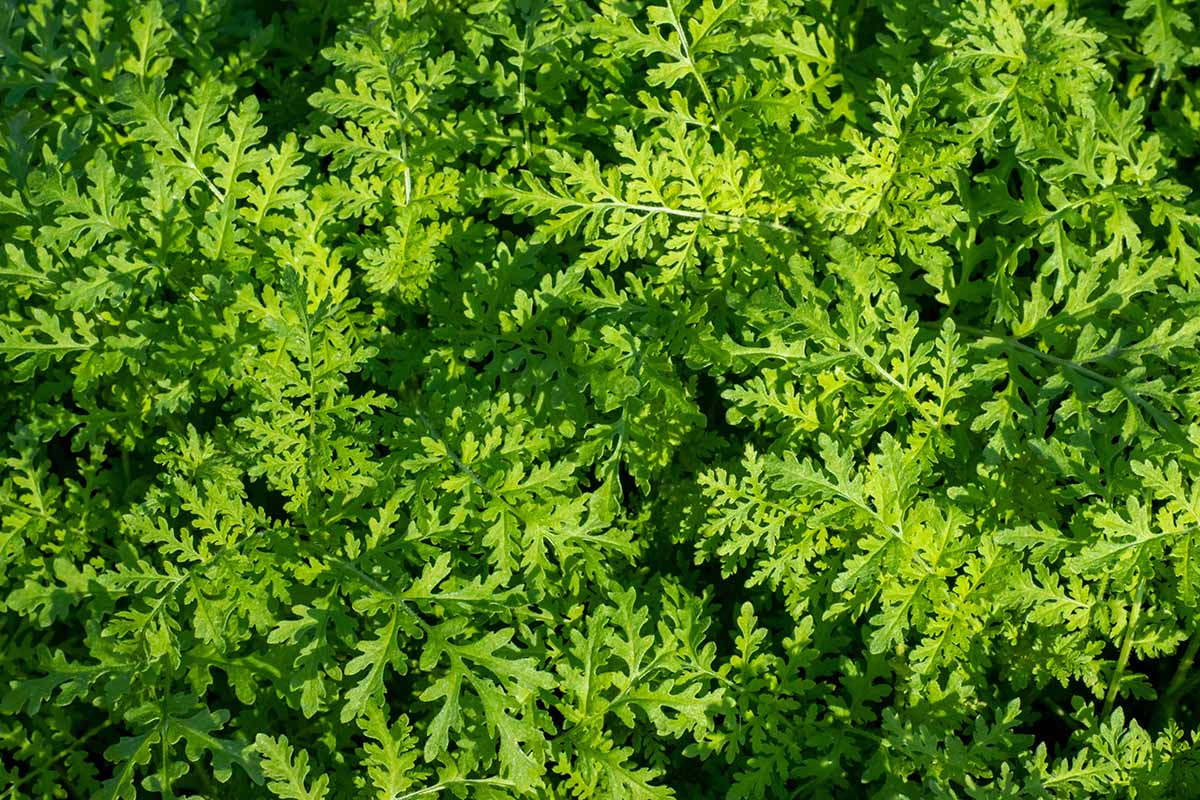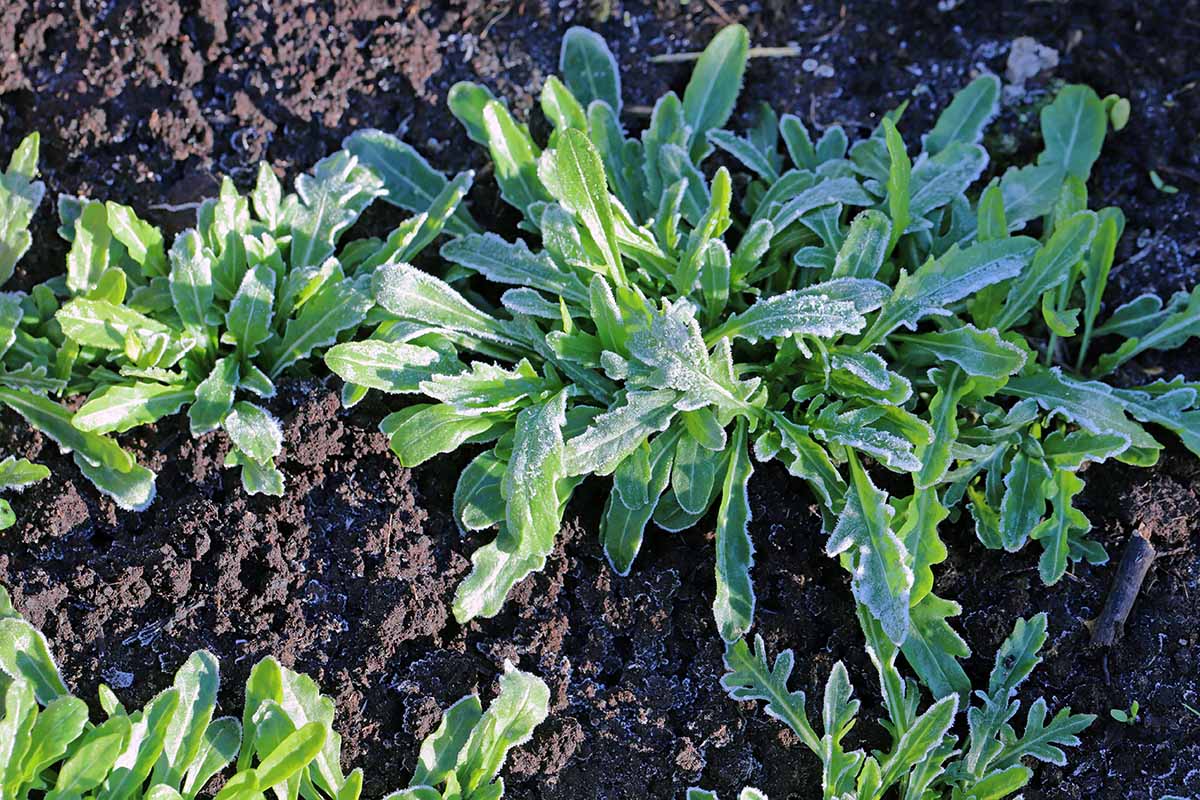Cover cropping is a common farming practice, with applications for smaller scale plots and raised beds where flowers, fruits, herbs, and vegetables grow as well. We link to vendors to help you find relevant products. If you buy from one of our links, we may earn a commission. This article focuses on rotating cover crops rather than growing the same ones in the same places from year to year. Here’s what we’ll cover: Let’s start with a brief review.
What Is Cover Cropping?
As mentioned above, cover crops shelter soil we are not currently using. The benefits of this practice include inhibiting soil erosion and preventing weed growth when the ground is bare. We sow fast-growing seeds as needed between spring and fall, depending upon when we plan to grow seasonal plants like flowers, fruits, herbs, and vegetables. We mow flowering cover crops as needed to keep them from setting seeds and becoming garden weeds. And when we’re ready to use a plot or raised bed for crops, we till the green plants under the soil, where they enrich it. Alternatively, no-till gardeners mow the cover to the ground and use the clippings as mulch. Their aim is to disturb the soil as little as possible. The ground is ready for planting in two to three weeks after tilling and three to four weeks with no-till mowing. The benefits of tilled-in or mowed mulch cover crops include:
Biodiverse, organically-rich soil structureDisruption of pest and disease cyclesErosion abatementReduced soil compactionImproved drainageReplenishment of soil nutrientsWeed suppression
Sowing cover crops adds value to the garden and saves time that we might otherwise spend on tasks like amending the soil, applying fungicides and insecticides, fertilizing, and weeding.
Green Manure Varieties
Cover crops fall into three categories:
BrassicasGrassesLegumes
We manage them in several ways, depending upon their hardiness and when the ground is fallow. We sow some in early spring. Farmers and gardeners who till turn them under to grow summer plants in the enriched soil. No-till growers don’t disturb the soil any more than necessary. They mow green manure to the ground and use the clippings as mulch. There are also “winter kill” options that we sow in early fall. They die with the first hard frost and remain in place for tilling under the following spring. Winter-hardy choices are also available that grow from early fall until the following spring when we till them under or mow them down.
Brassicas
Brassicas have a long taproot that loosens moderately compacted soil and absorbs nutrients deep underground. We sow some in early spring, and plant others in early fall for tilling or mowing to the ground the following spring. Brassicas act as “biofumigants” that inhibit fungal conditions and the activity of soilborne nematode pests. Their leafy foliage provides excellent weed-blocking ground cover. Examples are arugula, forage radishes (aka tillage radishes), mustard, kale, rapeseed, and turnips.
Grasses
The grass family includes grains. They have a network of fibrous roots that block weeds and help to keep soil from washing away. The roots “sequester” or store carbon, an essential element for healthy stems and foliage. Like brassicas, we sow them in early fall for tilling or mowing to the ground the following spring. Note that they can be quite difficult to uproot. If you choose to grow them, a no-till strategy of cutting them down and letting the clippings fall may be best. Sunn hemp (Crotalaria juncea) is grass that does not winter over. We sow it in early spring. Like the legumes we’ll discuss below, it is a “nitrogen-fixing plant” that makes this essential element readily available in the soil. Oats, sorghum, and Sudan grass are “winter kill” green manure we sow in early fall. They die off and are incorporated into the soil or mowed down and used as mulch in the spring. Beware that they emit an unpleasant odor as they decay. We sow winter barley and winter wheat in early fall to enrich the gardens we’ll plant the following spring.
Legumes
Legumes are members of the pea family. Unlike brassicas and grasses that have tough roots, they have soft ones. We sow them in early spring or early fall, depending upon their hardiness. We till or mow down legumes before summer planting time. If they begin to flower, we cut them before they set seed, and let them continue to grow, as mentioned above, until the ground is needed. In addition to providing green manure for organic enrichment, legumes fix nitrogen in the soil, making it easily accessible. Nitrogen-rich soil promotes vegetative growth and supports leafy greens. Cowpea (Vigna unguiculata) is a legume we sow in early spring because it is not hardy. Alfalfa, hairy vetch, red clover, and winter peas are hardy. We sow them in early fall.
The Benefits of Rotation
When plants grow all season, they deplete the nutrients in the soil. Experienced farmers have long known that letting soil “rest” is one way to support healthy crops. While it rests, they often enrich it with green manure. Cash crop rotation is a common practice that supplies refreshed soil which is less likely to harbor pests and diseases than monocropping, the practice of growing the same crop in the same place every year. The Royal Horticultural Society recommends using the following five plant groups as a rotation guide for crops that will be harvested and eaten:
BrassicasLegumesAlliumsNightshadesOther Roots
They offer guidance on three- or four-year rotation plans that enable growers to improve soil quality and get the upper hand on weeds, pests, and disease. With this practice, crops from the five groups return to their original location every three to four years. But these plans do not include cover cropping to replenish the soil. This concept also applies to the healthy cultivation of annual flowers, fruits, and herbs. That said, it makes perfect sense to adopt the practice of rotating green manure crops as part of this plan. Here’s why: Brassicas, grasses, and legumes are subject to pests and diseases that may overwinter in the soil and return with vigor each year unless we foil them by switching up our green manure choices, as well as our crop selection. Brassicas are susceptible to clubroot, a soilborne disease that may infect other members of the genus, including broccoli, cabbage, cauliflower, and kohlrabi. Grasses may harbor fungal conditions, like powdery mildew and rust, which can affect a wide range of edible and ornamental species. Legumes are prone to fungal conditions, root rot, and viral infections that may affect multiple species. When the pests and diseases resurface and their host plants are gone, they fail to thrive. Whatever you do, it’s important to avoid planting cover or cash crops from the same group in succession. Rotating cover crops in between productive gardening for harvest provides additional benefits to the soil, and helps to reduce pest and disease pressure. Using the RHS guidelines, a three-year cover crop rotation plan might look like this:
Brassica-grass-legumeGrass-legume-brassicaLegume-brassica-grass
If you find grasses too tough and malodorous to manage, even a two-year rotation of brassicas and legumes has its merits, as does planting other varieties of cash crops in between these like nightshades, cucurbits, and other edibles, as well as ornamentals like flowers. If you have a raised bed or two, you may only grow one type of green manure per year. Other gardeners may have multiple varieties on rotation throughout their property. Whatever your gardening scheme, rotating is the icing on the green manure cake, if you will. Also, seeds have different shelf lives, so if you over-buy, you may find that you can use certain varieties in future years as long as they’ve been stored properly. Examples of long-lasting cover crop seeds are:
Peas – 2 yearsRadishes – 6 yearsSorghum – 10 years
Growing green manure is an environmentally sound way to enrich the soil and nourish plants. Rotating thoughtfully to inhibit pests and disease pathogens adds even more value to the practice. It’s time to create a rotation scheme for the cover crops you use in your growing spaces. Why not take out your garden planner today and get started? Do you grow cover crops? Do you rotate them? Please share your thoughts in the comments section below. If you found this guide informative and want to read more about cover crops, we recommend the following next:
How and When to Plant Cold Weather Cover CropsGrowing Borage as a Cover Crop and for Green ManureHow to Grow Sunflowers as a Cover Crop
